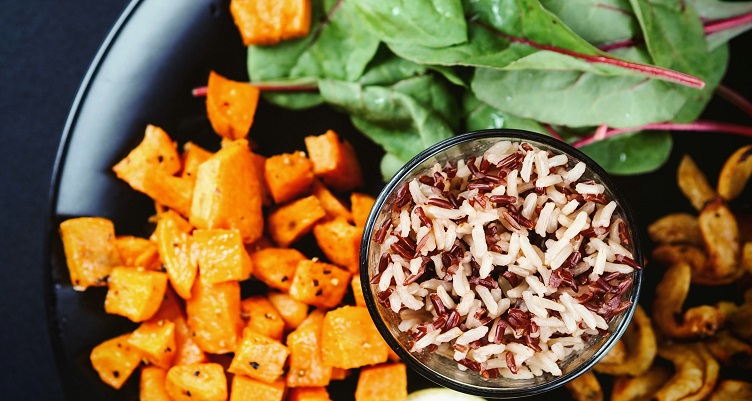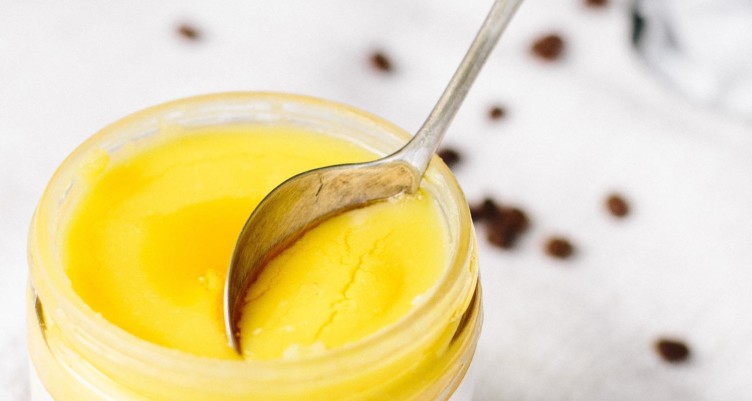Why Carb Cycling Can Be an Effective Strategy for Keto Dieters

- On the keto diet, you get most of your calories from fat, moderate calories from protein and very few from carbohydrates. This combination puts you in a fat-burning state called ketosis.
- A carb cycling diet plan can be helpful for keto dieters in need of a glucose boost on high-activity days.
- Don’t use carb cycling as an excuse to binge on foods packed with artificial ingredients…food choices still matter!
For keto dieters, watching your carbohydrate intake is absolutely essential. After all, there are specific macronutrient ratios that you need to adhere to in order to achieve a state of ketosis.
But thanks to bodybuilders, there’s another dietary strategy you can employ that may help you reach your weight management goals: carb cycling.
By balancing high-carb days with low-carb days, you can fuel glycogen stores for workouts without compromising your body’s ability to burn fat for energy.
Whether you’ve reached a body composition plateau or simply want to learn more about how to combine the carb cycling diet with a ketogenic lifestyle, you’ve come to the right place! Let’s take a look at how a carb cycling plan works, its potential health benefits and how to incorporate it within the ketogenic lifestyle.
What is carb cycling?
It’s thanks to bodybuilders the initial concept of carb cycling took off. This dieting method involves changing the amount of carbs you consume, often depending on your activity level.
In theory, high-fat, low-carb days will help put your body in a fat-burning state. However, on low-activity days, make sure to increase your consumption of healthy fats. (Essentially, this means following your typical keto diet macro ratios.)
On the other hand, your meal plan will include more carbs on high-activity days. Your body can run efficiently off glucose during your workouts. Consuming carbs after training will also help refuel your glycogen stores.
What are the benefits of carb cycling?

Whether you want to trim your body fat level down to achieve your weight management goals or you want to control your blood sugar more effectively, there are several reasons you may want to consider a carb cycling approach.
For instance, having specific high-carb days can help improve leptin function, your body’s weight-regulating hormone.[1]
In addition, studies show that carbohydrate loading can provide a performance boost for high-intensity, short-duration exercise.[2]
Consequently, while the bodybuilding community may believe a carb cycling approach can help build mass muscle, that may not necessarily be the case. A 2007 study found that the coingestion of carbohydrates with protein did not lead to an increase in post-exercise muscle protein synthesis.[3]
How does a carb cycling diet plan work?

Wondering how carb cycling works? A carb cycle plan can vary depending on your activity level. In general, stick to a low-carb diet on days that don’t include high-intensity activities. That means you can up your fat intake by adding Bulletproof Grass-Fed Ghee to your morning coffee or try whipping up some Keto White Chocolate Fat Bombs for an energy-boosting treat.
However, on those days you want to go hard in the gym, you can up your carbohydrate intake. A carb cycling meal may include sprouted whole grains (some prefer quinoa and brown rice) and organic starchy veggies… Believe me, your body needs to replenish its glycogen stores after you kill it in the gym!
On rest days, stick with a high-fat approach. So for keto dieters, that just means following your typical macro ratios.
How many carbs are ideal?
Because a carb cycling plan involves a ketogenic approach with lower-carb days, it’s important to understand just how many carbs you should consume. A good rule of thumb is 50 grams of total carbs per day, but your results may vary, depending on your diet and individual biology. If you’re still experiencing symptoms of the keto flu after the two-week mark, your body might be asking for more carbs.
For example, if you’re super active, you might need more than 50 grams of carbs per day. And if you’re hitting 50 grams per day, but not factoring in net carbs (aka your total carbs minus fiber and sugar alcohols), you might need to raise your daily carb intake.
Related: How to Find Your Ideal Carb Intake
Incorporating carb cycling with the keto diet

Remember, if you’re going to increase your carb intake, track yourself to see how your body responds. When you’re experimenting with your carb intake, ketone breath meters and keto sticks are great ways to see if you’re actually in ketosis.
What is carb cycling’s role in the keto diet? Take a closer look below…
Carb cycling food list
While carb cycling can help with weight management, blood sugar control and insulin sensitivity, it does not necessarily bring all the benefits of a keto diet. The lower-carb days on a carb cycling plan may still exceed the amount of carbs you need to consume in order to stay in nutritional ketosis.
However, there is a way to implement carb cycling with a ketogenic diet through cyclical ketosis. In fact, it’s already built into the Bulletproof Diet.
This carb cycling approach allows you to pick one day per week to eat more high-quality carbs (approximately 150 grams of net carbs). On your carb refeed day, you can add things from this carb cycling food list:
- Sweet potato
- Rice
- Butternut squash
- Carrots
- Plantains
- Low-sugar berries
Note that you may temporarily dip out of ketosis on your higher-carb day, but once your body burns through those extra carbs, you’ll return to ketosis. (This is called metabolic flexibility.)
Carb cycling this way allows you to take advantage of all the keto benefits, like appetite suppression, fat burning, boundless energy and laser focus, while still getting the carbs your body systems need to function properly.
Experimenting with exogenous ketones
When you’re in ketosis, your body produces an alternative form of fuel called ketones. You can also supplement with exogenous ketones, which are ketones you ingest. Exogenous ketones can boost your ketone levels, which helps you stay in ketosis, even when you have some carbs in your system.
Here are two types of exogenous ketones (and important details to keep in mind):
- Ketone salts: Not all of the ketones in ketone salts are bioidentical, which means the body may not be able to use them. Learn why you can skip most ketone salts.
- Ketone esters: This option is more effective than ketone salts, but keto esters have an unfavorable and chemicalike flavor. Plus, they’re expensive to buy and not widely available for purchase.
However, it’s important to keep in mind that exogenous ketones are not necessary to maintain a state of ketosis. In fact, Bulletproof Brain Octane C8 MCT Oil is the happy medium between pure, nutritional ketosis and exogenous ketones. Since it’s pure C8 MCT oil, which is the most ketogenic MCT, it raises ketone levels four times more efficiently than coconut oil alone. That means more brain-powering, fat-burning keto benefits—and you can add it to anything, from coffee to salad dressings.
Other types of keto diets
Luckily, when it comes to the keto diet, you aren’t limited to just one style of eating. There are different variations of the ketogenic diet that can help you stay in the fat-burning state of ketosis, while still increasing your carb intake. These include:
- Targeted keto, which is great for athletes because you eat more carbs before you work out—that way, your muscles will have glucose available to power through your gym session.
- Moderate keto, where you eat 100 to 150 grams of net carbs per day.
Related: The Keto Diet for Beginners: The Ultimate Guide
The bottom line: There are instances where you may need to modify your keto diet to get the maximum lasting benefits—and that’s perfectly okay. If strict or dirty keto isn’t working for you, try the carb cycling diet. Just make sure you’re listening to your body as you discover what works best for your health goals.
Still exploring what type of keto suits your needs? Find out why you may not be losing weight on keto and learn what to do about it.
This article has been updated with new content.
Sign up for early access to sales, product launches, the latest Bulletproof news and more!



